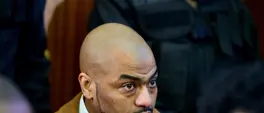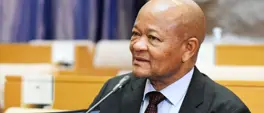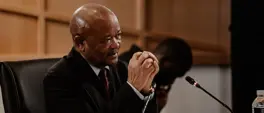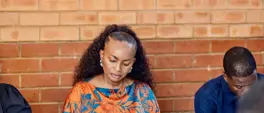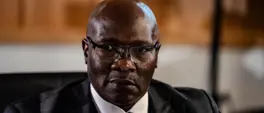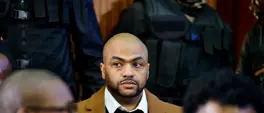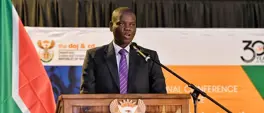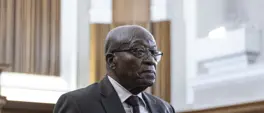JAMIL F. KHAN | How power, stigma and indifference can turn ordinary people into perpetrators
Jamil F. Khan
16 July 2025 | 10:27'In any society, those who possess power can decide which human differences are desirable and which are not. In this way, what is valued by the dominant group sets the criteria for stigmatisation."

Systemically engineered poverty, produces violence which affirms and justifies a negative stereotype. Photo: Pixabay
The unravelling of human rights cultures and institutions across the Western world, over the last two years, has been met with shock and indignation at best, and indifference at worst.
This is not to suggest that human rights have not been regressing in other parts of the world but owing to the lie of the West’s self-proclaimed moral superiority, it has been seen as more egregious.
This rupture in human rights culture is seen as sudden and unexpected, but if we have truly been paying attention, it is simply a natural conclusion to a very longstanding, concealed allowance of unchecked disdain for marginalised people.
Often referred to as backlash for decades of human rights progress that preceded it, this moment, exemplified by the genocides and human rights abuses in Palestine, Sudan and Congo, is the consequence of how unchecked disdain nurtures genocidal intent.
As South Africans, living with a fragile social contract premised on reconciliation and forgiveness without accountability, we are attuned to the meaning of utterances like “you people”.
This expression of othering is hurled at marginalised people in socially unequal contexts as a loaded identification of undesirable differences, usually followed by a slew of stereotypes.
Though some, usually those too cowardly to care deeply about human life, might try to dismiss this as being “not that deep”, it, in fact, is that deep. No useful understanding of the world has ever been formulated through a refusal to think, feel and see more deeply, anyway.
In any society, those who possess power can decide which human differences are desirable and which are not. In this way, what is valued by the dominant group sets the criteria for stigmatisation, which can and does exclude people from many forms of social participation, such as job opportunities, home rental or mortgage agreements, recreational communities, and meaningful relationships, all of which prevent people from living fulfilled, prosperous lives.
Scholar Lerita Coleman characterises these experiences as “a special kind of downward mobility” in which stigmatised people lose their place in the social hierarchy, dispossessing them of both economic and social viability.
The stigma imposed on marginalised people through attaching sentiments of criminality and violence creates an emotional economy of fear that is then attached to them. This fear forecloses opportunities for meaningful connection, communication, and isolates marginalised people from a general social experience of personhood.
Stigma also inscribes a dichotomy of superiority/inferiority, which gives rise to negative stereotypes that often do point to a reality that characterises the lives of marginalised people but does not identify its causes. Systemically engineered poverty, for example, produces violence, which affirms and justifies a negative stereotype.
In this way, stigma can be understood as a negative stereotype that empties the stigmatised person of all positive qualities.
Coleman says that “perceptually, stigma becomes the master status, the attribute that colours the perception of the entire person. All other aspects of the person are ignored except those that fit the stereotype associated with the stigma.”
In this way, marginalised people become locked into their bodies and social circumstances with few chances to escape the overwhelming weight of perceptions informed by negative stereotypes that often reflect a “truth” to the uncritical observer.
To a critical observer, various histories reveal marginalised people to be the subjects of cruel social engineering experiments, legislated through oppressive social and legal systems.
Stigma also leads to social exile, which orders societies in ways that maintain the status quo, which is a form of social control. Using stereotypes that portray people in negative ways manufactures justifications for excluding them and maintaining the prevailing social order.
At the centre of enacting this social control is power, which licenses the non-stigmatised to decide which differences matter and should be stigmatised. Through these social processes, what are deemed undesirable differences are perceived with disdain and disgust.
To bring into perspective the end goal of the disgust and disdain that circulate in such insidious ways, we need only look around us. Such a grand scale of murder, as executed during genocide, starts with the unchecked diffusion of disdain or contempt through societies, directed at differences to which power has attached differential value judgements. In these ways, people inadvertently participate in and nurture genocidal intent, which is always at risk of being detonated.
When we look around at the world today, it is reasonable to feel utterly helpless in the face of worsening authoritarianism and violence. We often cannot enact big systemic changes on our own.
However, where we do have the most control is over ourselves. The world leaders we watch with horror at their lack of humanity were nurtured in a society permissive of such inhumanity. They did not appear out of nowhere. They were encouraged, supported and endorsed by a society that collectively and overwhelmingly agreed with their ideas and sentiments.
Though we are horrified, we must not separate ourselves from the contexts that created such brutality. When we look at this inhumanity, we must ask ourselves how much of it we have internalised, normalised and replicated through our own actions and beliefs.
With this question, I am reminded of the words of James Baldwin when he noted how love has never been a popular movement and said: “Walk down the street of any city, any afternoon, and look around you. What you've got to remember is that what you're looking at is also you. Everyone you're looking at is also you. You could be that person. You could be that monster, you could be that cop. And you have to decide, in yourself, not to be.”
We all have to decide, in ourselves, not to be inhumane. It does not just happen, especially not in a world founded on inhumanity. While we despair, we must remember to constantly be checking our views and sentiments for that horrific tinge of disdain when we engage with people.
As with every atrocity, its expression is sudden, but its cultivation is gradual and insidious. Without careful attention, we won’t even notice our disdain progressing until we are personally in charge of the controls that exterminate an entire group of people, by when it is too late.
Jamil F. Khan is an author, doctoral critical diversity scholar, and research fellow at the Johannesburg Institute for Advanced Study.
Get the whole picture 💡
Take a look at the topic timeline for all related articles.
Trending News
More in Opinion

5 December 2025 04:47
MANDY WIENER: Madlanga Inquiry reveals war between 'Hopedealers' and 'The Corrupt'
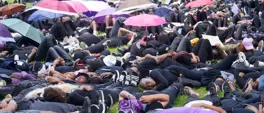
2 December 2025 12:00
TEGAN SNYMAN | Gender-based violence and femicide need to be treated as a true national crisis
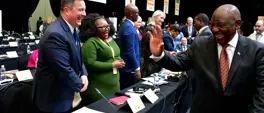
1 December 2025 13:55
JAMIL F. KHAN | GNU era exposes that corruption has no race and no party boundaries




